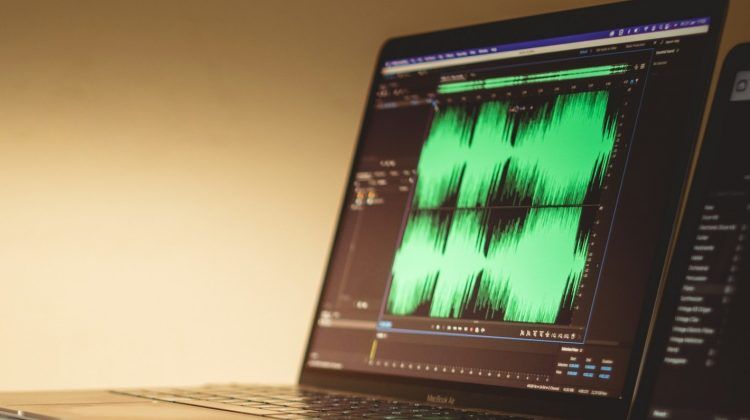
Zac Amos December 23, 2024
Collected at: https://datafloq.com/read/how-ai-transforming-acoustic-monitoring/
Acoustic monitoring – the use of sound to gather information about an environment – has gained significant traction across various industries due to advancements in AI. Integrating algorithms with acoustic sensors can help organizations analyze audio data more efficiently, enabling real-time decision-making and improved accuracy. Here are several use cases showcasing how AI enhances acoustic monitoring.
1. Oceanic and Marine Research
Underwater acoustic monitoring benefits significantly from AI, particularly in studying marine life and human impact on oceans. AI systems analyze sonar and hydrophone data to detect harmful activities like illegal fishing and overfishing. These are also critical in tracking the impact of noise pollution on marine life, enabling researchers to mitigate its effects.
2. Industrial Equipment Monitoring
In industrial settings, acoustic monitoring with AI enhances predictive maintenance. The models analyze machinery sounds to detect anomalies such as changes in vibration or unexpected noises that signal potential failures. This approach reduces downtime, lowers repair costs, and ensures operational safety in industries like manufacturing and energy production.
3. Health Care and Biomedical Applications
Algorithms can analyze respiratory sounds to detect early signs of specific diseases. Similar ones are being developed to monitor neonatal sounds, offering noninvasive ways to assess a baby’s health. This use of acoustic monitoring supports proactive and precise medical interventions.
4. Urban Noise Management
Cities leverage AI-powered acoustic monitoring to manage noise pollution. Smart systems identify and classify noise sources such as traffic, construction or nightlife activities, allowing municipalities to implement targeted solutions. This technology contributes to healthier urban environments by reducing noise-related stress and improving quality of life.
5. Security and Surveillance
Acoustic monitoring in security applications uses AI to detect gunshots, explosions or other suspicious noises in real time. It’s a reliable tool for law enforcement and emergency services because it filters background noise and accurately identifies threats. Such systems are deployed in public spaces, enhancing response times and ensuring safety.
6. Environmental Conservation
Machine learning algorithms can analyze sounds from ecosystems to identify species, track biodiversity, and detect threats such as poaching and illegal logging. For example, AI models process audio data from forests to find different animal calls, helping conservationists monitor endangered species like orangutans or detect invasive species that disrupt ecosystems.
7. Disaster Management
Acoustic monitoring powered by AI is proving invaluable in disaster management and emergency response. Algorithms analyze seismic and acoustic signals to detect early warnings of earthquakes, landslides or tsunamis.
These systems process vast amounts of audio data to identify subtle precursors of disasters, enabling timely evacuation and mitigation strategies. Additionally, during search-and-rescue operations, AI acoustic tools can detect sounds such as cries for help or movements beneath debris, speeding up rescue efforts and saving lives.
8. Agricultural Monitoring
Farmers are adopting AI-based acoustic monitoring to optimize crop and livestock management. It can identify pest infestations or monitor animal behavior, enabling timely interventions.
Sensors paired with AI can analyze insect sounds to predict outbreaks, reducing crop damage and improving yields. Also, with Light Detection and Ranging scanning and photogrammetry, drones can produce comprehensive soil maps that provide data on durt health and nutrient distribution.
9. Smart Home Technology
In smart homes, AI acoustic monitoring powers voice assistants and security systems. Advanced algorithms process ambient sounds to recognize alarms, breaking glass or other unusual noises, enhancing home safety.
10. Cultural Heritage Preservation
AI-powered acoustic monitoring is increasingly used to preserve cultural heritage sites and artifacts. These systems analyze sounds in historical structures to detect early signs of degradation, such as cracks in walls or structural integrity shifts. Identifying these issues through subtle acoustic changes can help restoration teams act promptly to prevent further damage.
Moreover, AI tools are being employed to study and replicate ancient acoustic environments such as the soundscapes of ancient theatres or caves, providing insights into historical sound experiences. This unique application highlights how AI contributes to safeguarding history for future generations.
Mitigating Electrical Interference in AI Acoustic Systems
Like professional recording studio setups, AI-powered acoustic monitoring systems are highly sensitive to electrical noise and interference. High-frequency noise and transient spikes from appliances and power lines can introduce errors that reduce the precision of sound analysis.
For example, noise in power lines can distort sound patterns, affecting an AI system’s ability to detect endangered species or monitor structural integrity. To mitigate these issues, professionals should consider isolating circuits, using shielded isolation transformers and ensuring stable voltage.
Challenges and Considerations
While AI in acoustic monitoring offers transformative potential, challenges remain. Ensuring the accuracy of AI models in diverse acoustic environments is critical, as is addressing privacy concerns in applications like surveillance. Furthermore, collecting and processing large datasets requires adherence to ethical standards, strengthened regulatory oversight and robust infrastructure.
Driving Efficiency and Innovation Through AI-Powered Acoustic Monitoring
AI is unlocking new possibilities in acoustic monitoring, making it a valuable tool across industries. From environmental conservation to health care and security, these applications demonstrate how algorithms enhance sound data analysis, driving efficiency and innovation. However, as the technology evolves, addressing challenges like data privacy and model reliability will be essential for its continued growth.

Leave a Reply